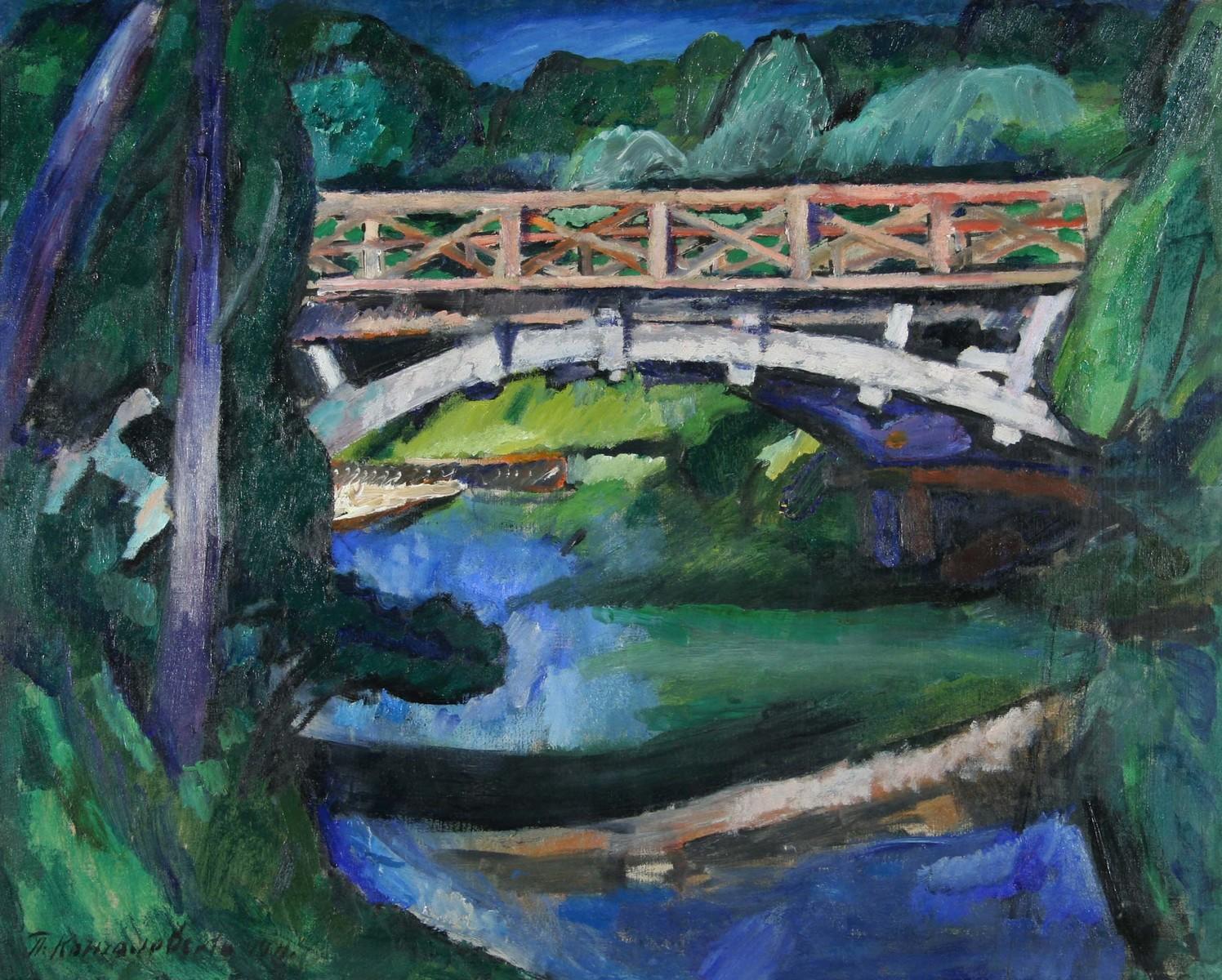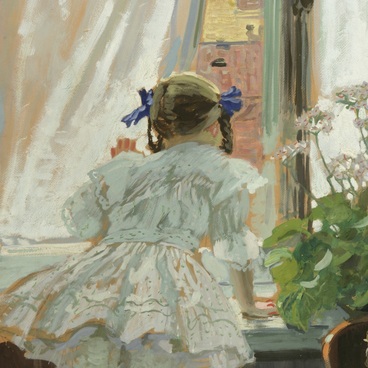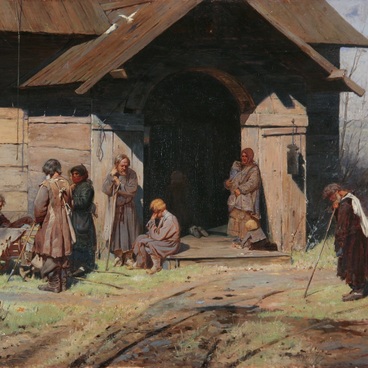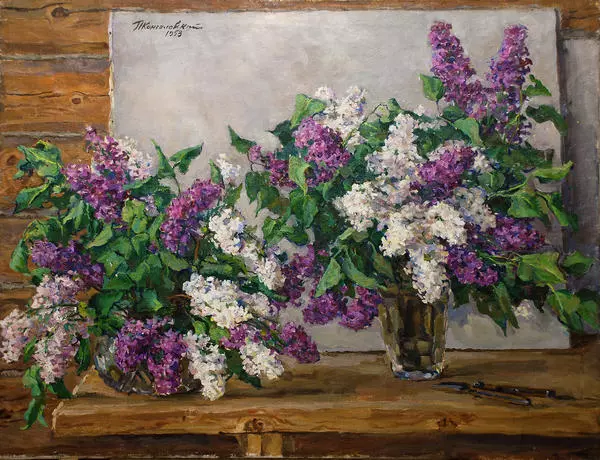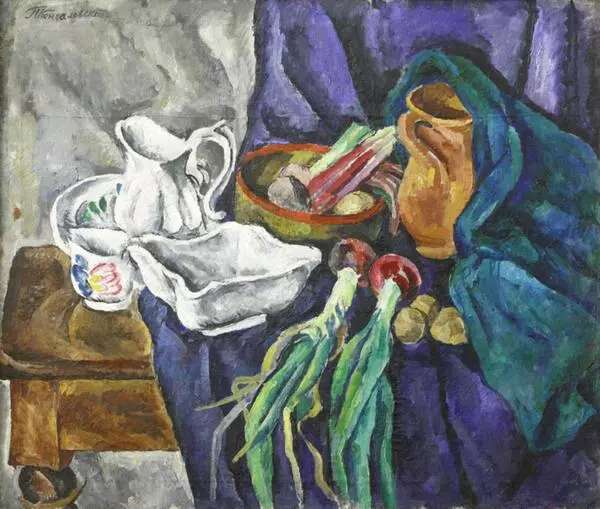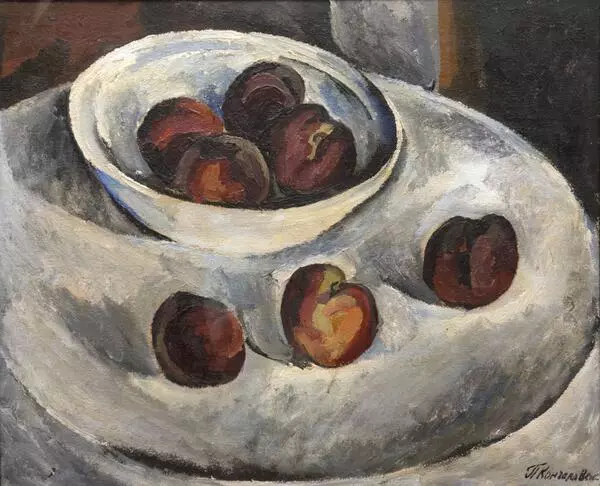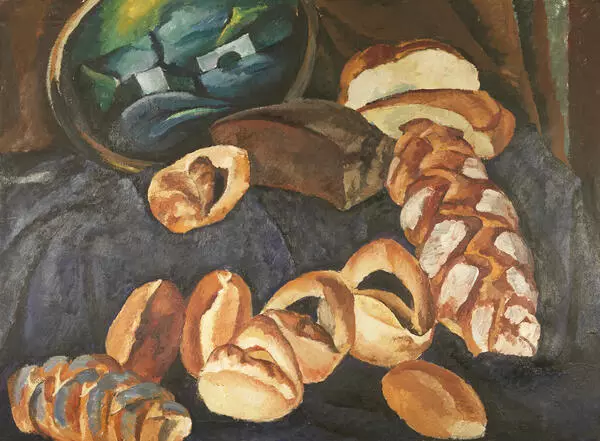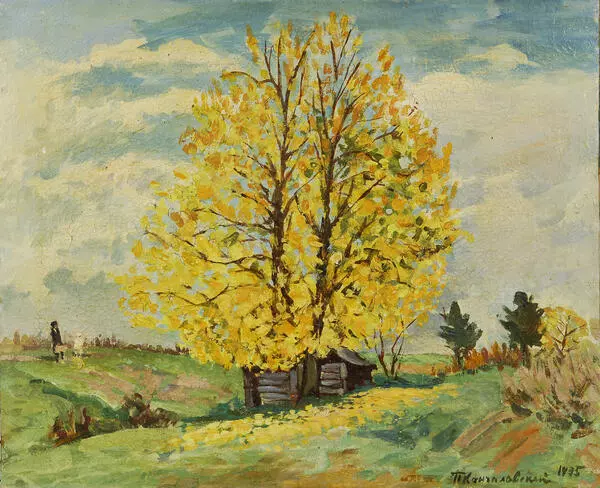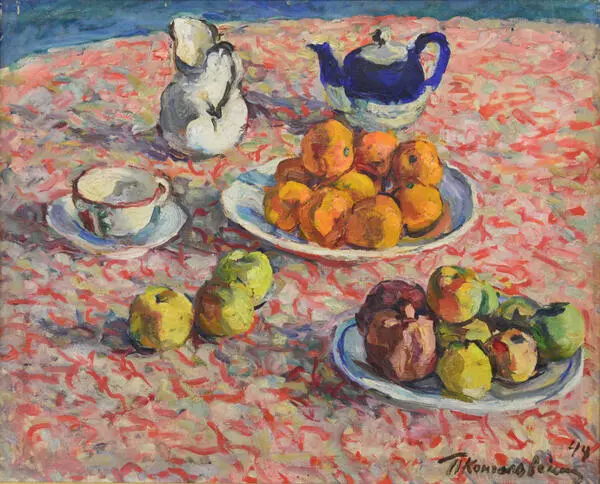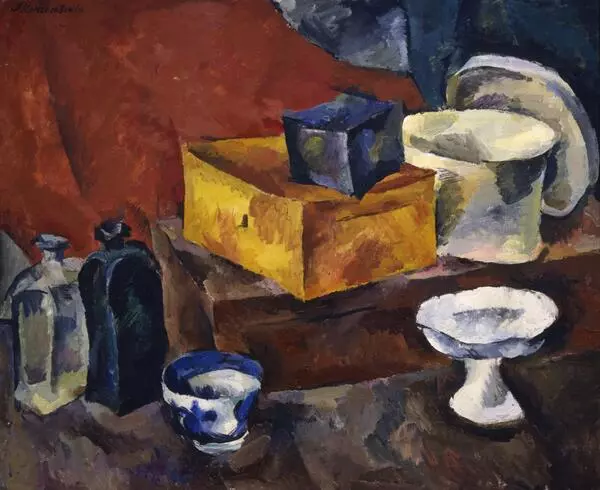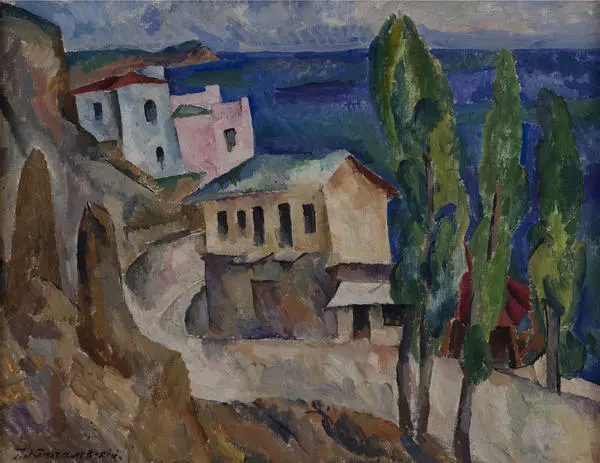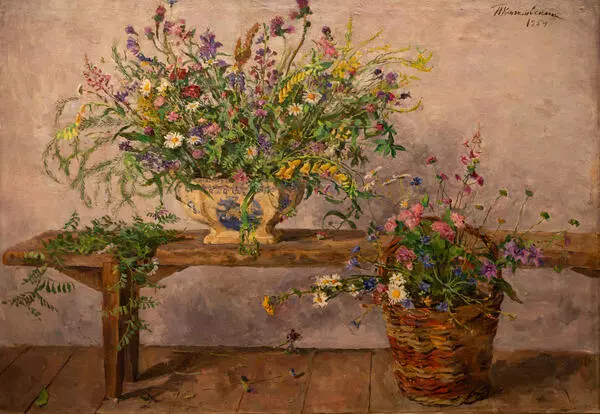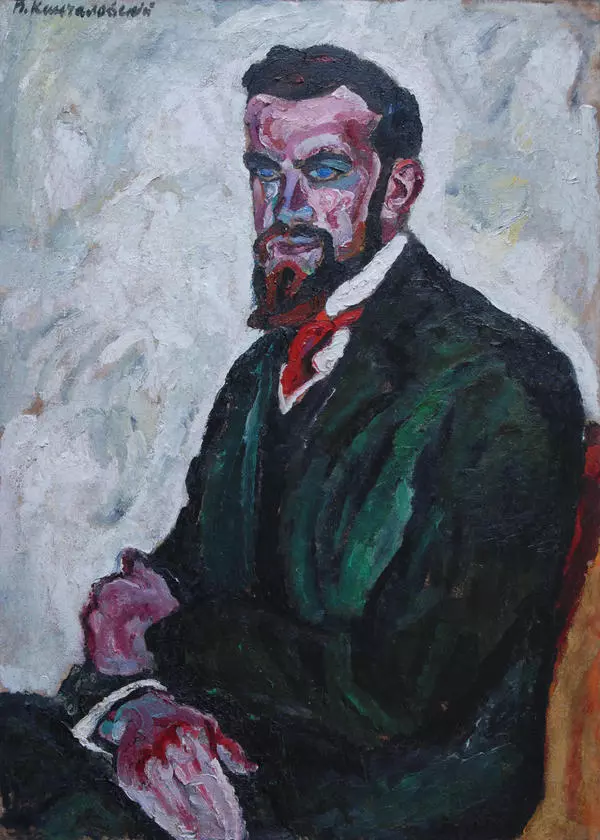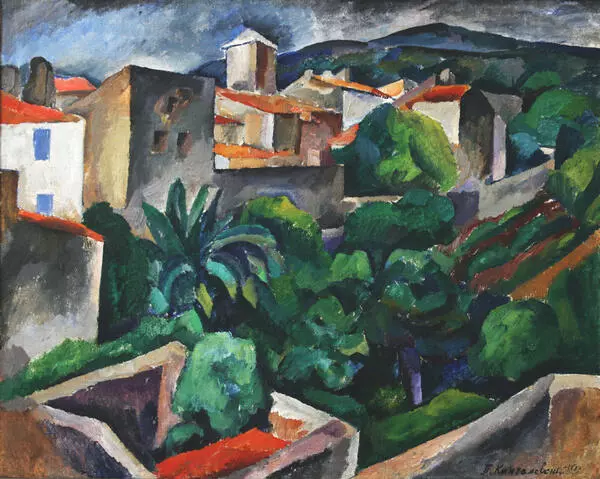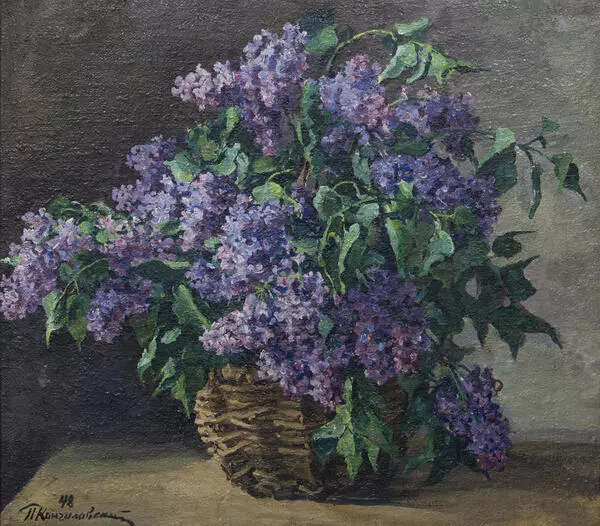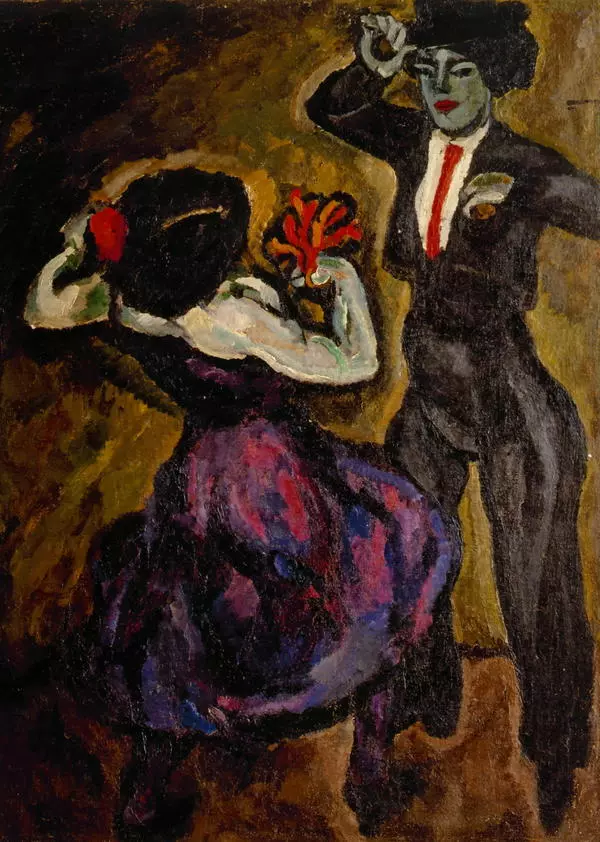The most productive creative period of Pyotr Konchalovsky started at the beginning of the 20th century. It was a time marked by the search for new ideas, revision of artistic traditions and their rapid developments. Konchalovsky was one of the founders and subsequently leaders of the avant-garde art group ‘Jack of Diamonds’. After graduation from the Moscow School of Painting, Sculpture and Architecture, he traveled extensively throughout Europe, acquainting himself with the latest achievements of modern painting. He had diverse artistic interests and used to draw genre, landscape, and still life paintings.
He was influenced by the distinguished Russian artist Vasily Surikov, his father-in-law, whom he first travelled to Spain with, and later worked throughout Europe.
Another significant role for Konchalovsky played Paul Cezanne, whose ideas became fundamental for the young painter. The French painter insisted that the artist’s task was not to capture instant impressions of reality, but to study it deeply and to transmit its general features: volume, structure, color.
The landscape “Bridge” was painted under the influence of Cezanne’s painting ‘Bridge across the Marne at Créteil’. Konchalovsky uses picturesque and plastic method of the French painter depicting a wooden bridge over the Vorya river in front of the Abramtsevo estate located north to Moscow. He also presents a motionless river, heavy leafage of Abramtsevo oaks, and an intense blue sky. Expressing the power and greatness of nature, Konchalovsky densely sculpts form with paints and makes colorful mass more intense. The classically balanced composition traces back to the academic canon, the main feature of which was the idea of the constancy and inviolability of the world.
Before the revolution, this painting belonged to Isadjan Isadjanov, a collector of avant-garde art and the works of the Jack of Diamonds painters in particular. In 1919, Isadjanov’s collection was nationalized, and became fundamental to the basis of the 7th Proletarian Lunacharsky Museum. When that museum was disbanded, the paintings were transferred to the Tretyakov Gallery and other museums. In 1927 Omsk got four works from the Isadjanov Jack of Diamonds collection, including Konchalovsky’s ‘The Bridge’.
He was influenced by the distinguished Russian artist Vasily Surikov, his father-in-law, whom he first travelled to Spain with, and later worked throughout Europe.
Another significant role for Konchalovsky played Paul Cezanne, whose ideas became fundamental for the young painter. The French painter insisted that the artist’s task was not to capture instant impressions of reality, but to study it deeply and to transmit its general features: volume, structure, color.
The landscape “Bridge” was painted under the influence of Cezanne’s painting ‘Bridge across the Marne at Créteil’. Konchalovsky uses picturesque and plastic method of the French painter depicting a wooden bridge over the Vorya river in front of the Abramtsevo estate located north to Moscow. He also presents a motionless river, heavy leafage of Abramtsevo oaks, and an intense blue sky. Expressing the power and greatness of nature, Konchalovsky densely sculpts form with paints and makes colorful mass more intense. The classically balanced composition traces back to the academic canon, the main feature of which was the idea of the constancy and inviolability of the world.
Before the revolution, this painting belonged to Isadjan Isadjanov, a collector of avant-garde art and the works of the Jack of Diamonds painters in particular. In 1919, Isadjanov’s collection was nationalized, and became fundamental to the basis of the 7th Proletarian Lunacharsky Museum. When that museum was disbanded, the paintings were transferred to the Tretyakov Gallery and other museums. In 1927 Omsk got four works from the Isadjanov Jack of Diamonds collection, including Konchalovsky’s ‘The Bridge’.

